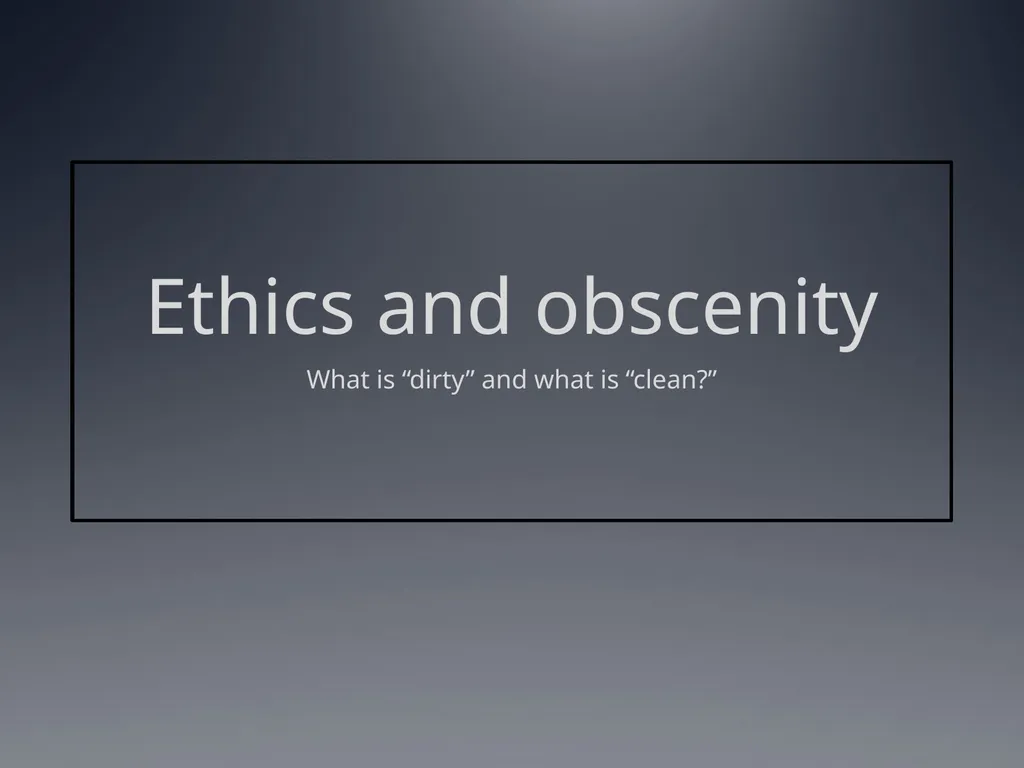
Ethics and obscenity What is “dirty” and what is
Author: conchita-marotz | Published: 2025-08-04
Description: Ethics and obscenity What is dirty and what is clean? Ethics and obscenity Lenny Bruce, a famous 1960s comic, explored the question of obscenity. He asked, what is dirty, and what is clean? in his 1960s monologues.
Download Presentation
Download the PPT/PDF: Download
Transcript:
Loading transcript�